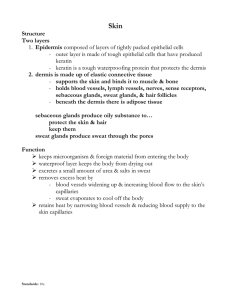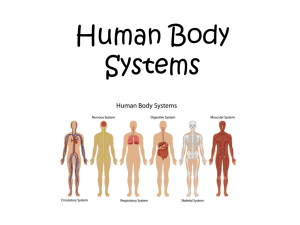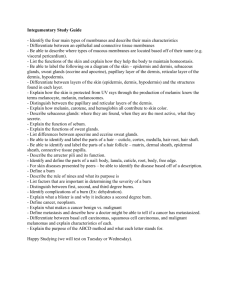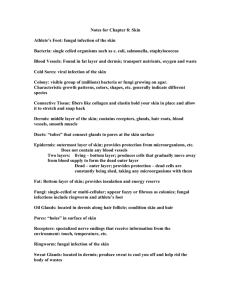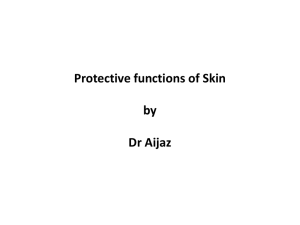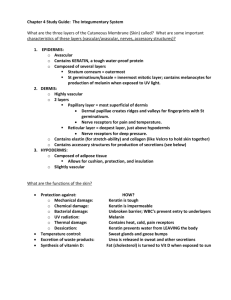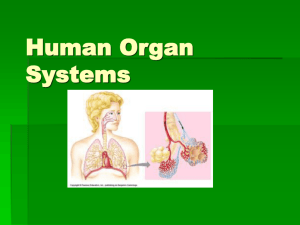Explanation Writing Sample
advertisement
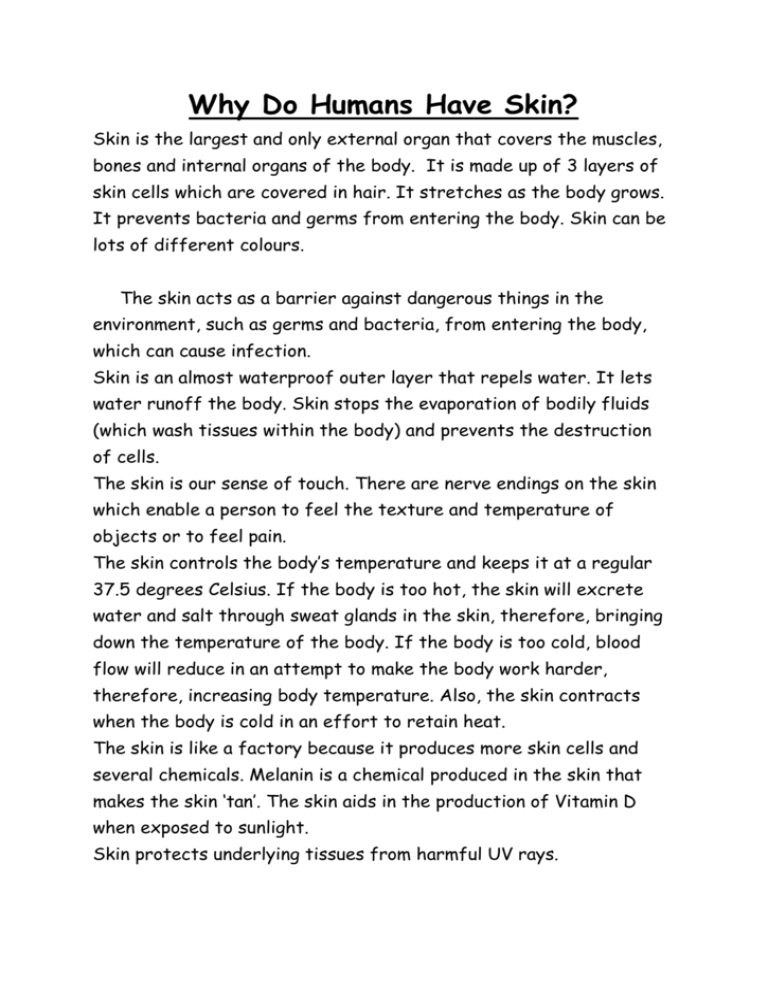
Why Do Humans Have Skin? Skin is the largest and only external organ that covers the muscles, bones and internal organs of the body. It is made up of 3 layers of skin cells which are covered in hair. It stretches as the body grows. It prevents bacteria and germs from entering the body. Skin can be lots of different colours. The skin acts as a barrier against dangerous things in the environment, such as germs and bacteria, from entering the body, which can cause infection. Skin is an almost waterproof outer layer that repels water. It lets water runoff the body. Skin stops the evaporation of bodily fluids (which wash tissues within the body) and prevents the destruction of cells. The skin is our sense of touch. There are nerve endings on the skin which enable a person to feel the texture and temperature of objects or to feel pain. The skin controls the body’s temperature and keeps it at a regular 37.5 degrees Celsius. If the body is too hot, the skin will excrete water and salt through sweat glands in the skin, therefore, bringing down the temperature of the body. If the body is too cold, blood flow will reduce in an attempt to make the body work harder, therefore, increasing body temperature. Also, the skin contracts when the body is cold in an effort to retain heat. The skin is like a factory because it produces more skin cells and several chemicals. Melanin is a chemical produced in the skin that makes the skin ‘tan’. The skin aids in the production of Vitamin D when exposed to sunlight. Skin protects underlying tissues from harmful UV rays. The skin holds body parts in place and prevents movement of such parts. The skin acts like a sponge and absorbs oily substances. The skin is made up of 3 layers of tissue, each with their own important job. 1. The epidermis is the outer layer of skin that we can see and touch. It is responsible for regulating the body’s temperature and it is home to the cells that produce melanin. It prevents body fluids from escaping and it protects the body from germs. Its consistently making new skin cells, which when ready, move to the top to make a new layer of skin. It does not contain any blood vessels. 2. The dermis is the second layer of skin which cushions the body from stress or strain. There are a lot of blood vessels in the dermis, which keep the skin cells healthy by bringing oxygen and nutrients to the cells. The dermis contains collagen and elastin which give the skin its shape and its elasticity. It contains nerve endings, sweat glands, oil glands and hair follicles. 3. The subcutaneous layer (hypodermis/ hyperdermis) is the third layer of skin which is made mostly of fat cells, which absorb and retain heat. It also protects the internal organs from injury and shocks. It attaches the skin to the underlying bone and muscle. Over 50% of dust in your home is dead skin. An adults average skin spans 22 square feet, weighs 9 pounds and contains more than 11 miles of blood vessels. Skin is 15% of your body weight. The skin loses 30-40 thousand dead skin cells per minute. The skin renews itself every 28 days. Oily surfaces on the skin may contain over 500 million bacteria per sq inch. There is 45 miles of nerves in the skin. In a lifetime, you would fill a 2 storey house with dead skin. Skin is thickest on the sole of the foot (4mm) and it is thinnest on the eyelid (0.02mm) Skin releases as much as 13.5L of sweat in hot weather. On average 14 species of fungi live between your toes. Skin conditions include warts, eczema, acne, cellulitis, verrucas, birthmarks, skin cancer, ingrown nails and boils. The skin is an extremely versatile barrier that shouldn’t be taken for granted. We need it to survive. All in all, skin is a wonderful and complex organ. Completed by 5th and 6th class 2013/2014
